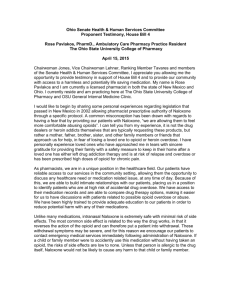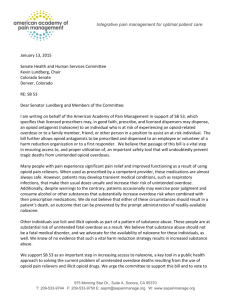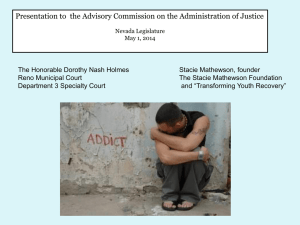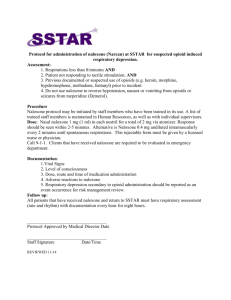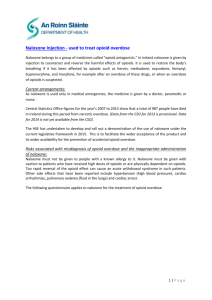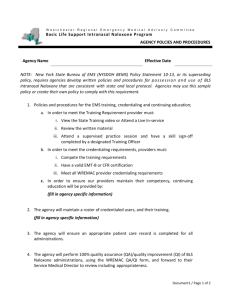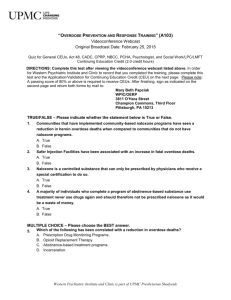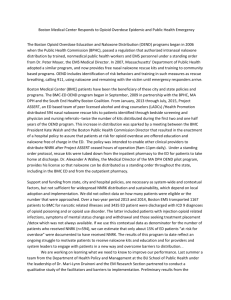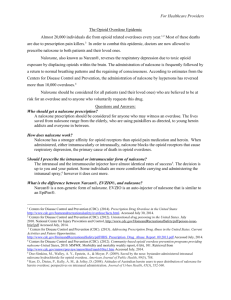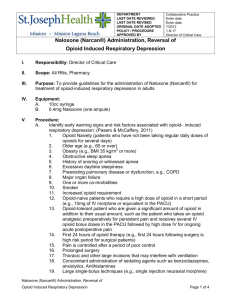Example Policy provided by Boston Health Care for the Homeless
advertisement
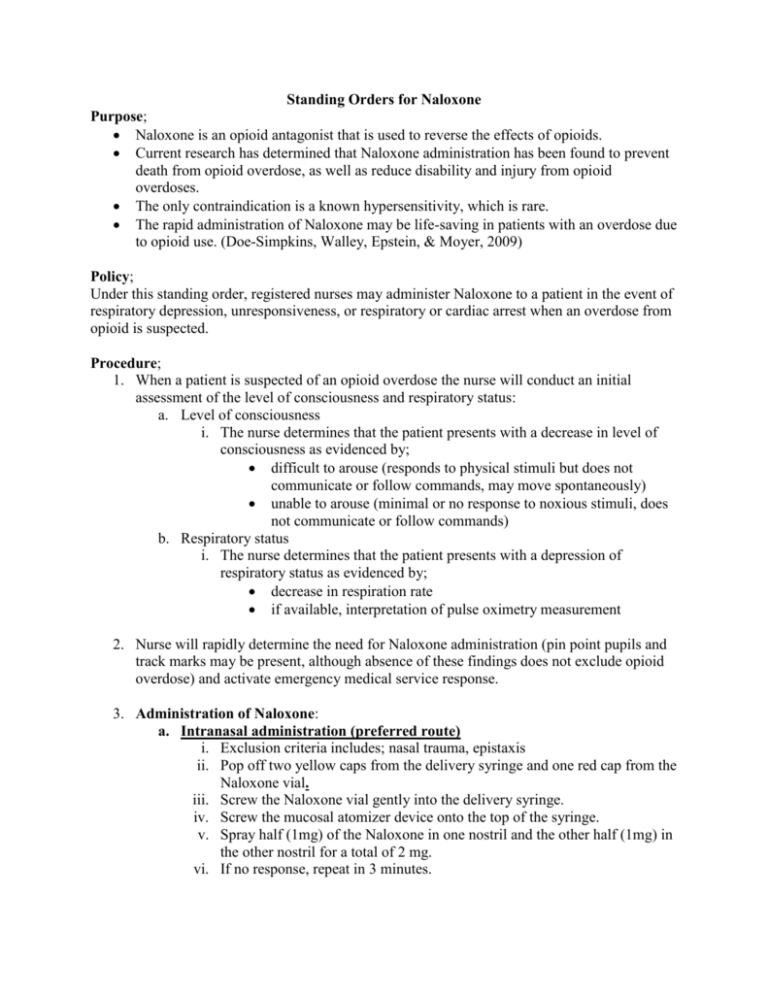
Standing Orders for Naloxone Purpose; Naloxone is an opioid antagonist that is used to reverse the effects of opioids. Current research has determined that Naloxone administration has been found to prevent death from opioid overdose, as well as reduce disability and injury from opioid overdoses. The only contraindication is a known hypersensitivity, which is rare. The rapid administration of Naloxone may be life-saving in patients with an overdose due to opioid use. (Doe-Simpkins, Walley, Epstein, & Moyer, 2009) Policy; Under this standing order, registered nurses may administer Naloxone to a patient in the event of respiratory depression, unresponsiveness, or respiratory or cardiac arrest when an overdose from opioid is suspected. Procedure; 1. When a patient is suspected of an opioid overdose the nurse will conduct an initial assessment of the level of consciousness and respiratory status: a. Level of consciousness i. The nurse determines that the patient presents with a decrease in level of consciousness as evidenced by; difficult to arouse (responds to physical stimuli but does not communicate or follow commands, may move spontaneously) unable to arouse (minimal or no response to noxious stimuli, does not communicate or follow commands) b. Respiratory status i. The nurse determines that the patient presents with a depression of respiratory status as evidenced by; decrease in respiration rate if available, interpretation of pulse oximetry measurement 2. Nurse will rapidly determine the need for Naloxone administration (pin point pupils and track marks may be present, although absence of these findings does not exclude opioid overdose) and activate emergency medical service response. 3. Administration of Naloxone: a. Intranasal administration (preferred route) i. Exclusion criteria includes; nasal trauma, epistaxis ii. Pop off two yellow caps from the delivery syringe and one red cap from the Naloxone vial. iii. Screw the Naloxone vial gently into the delivery syringe. iv. Screw the mucosal atomizer device onto the top of the syringe. v. Spray half (1mg) of the Naloxone in one nostril and the other half (1mg) in the other nostril for a total of 2 mg. vi. If no response, repeat in 3 minutes. b. IM or SQ administration i. Pop off two yellow caps from the delivery syringe and one red cap from the Naloxone vial. ii. Screw the Naloxone vial gently into the delivery syringe. iii. Attach safety needle to pre-filled Naloxone syringe. iv. Inject 2mg IM or SQ. v. If no response, repeat in 3 minutes. 4. Documentation a. Record encounter in patients’ electronic medical record. i. Summary line to include “Naloxone administered” ii. Documentation must include patient presentation, route (intranasal or IM), and dose that was administered as well as the patient’s response to the Naloxone administration. 5. Naloxone Kits a. Each kit contains one prefilled syringe [2mg/2 ml], one 23 gauge safety needle, one atomizer, one alcohol pad and instructions for use. Medical Directors signature: ______________________ Effective date: _________________ Reference Doe-Simkins, M., Walley, A., Epstein, A. & Moyer, Peter. (2009). Saved by the nose: Bystander-administered intranasal naloxone hydrochloride for opioid overdose. American Journal of Public Health, 99 (5), 788-791.
